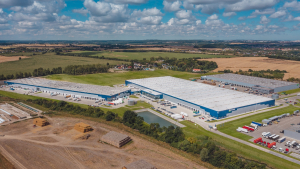
The Environment component in ESG is attracting the largest share of investments made by property players, as sustainable buildings have a better position in the market, concluded speakers in the ESG panel at SEE Property Forum 2022, held in Bucharest.
Studies show that sustainable properties have 10% higher occupancy rates and 25% more income compared to conventional buildings, explained Hubert Abt, CEO, New Work & workcloud24. He added that ESG has nothing to do with the certification of a building. “We see buildings where the service charge is higher than the rent - where is the value of the building?”
Consumers want to have healthier offices and homes and this is now measurable due to the Green Deal promoted by the EU, said Dr. Angelus Bernreuther, Head of Investor Relationship Management, Kaufland. He explained that sustainability formerly was not meant as ESG. “Now we have seen many things coming from consumers to the industry.”
Claudiu Bisnel, Managing Partner, Brisk Group pointed out that the construction industry is responsible for 40% of the global carbon footprint. “We have to look at the way in which we structure projects and development. It is important to have a circular economy, starting from the design phase. We need to be very careful when we look at the materials used in the building - how they are produced, as locally as possible, and how they can be recycled.”
You cannot have a sustainable business without governance, stated Bogdan Doicescu MRICS, Head of Real Estate Division, Bog’Art. He explained that Governance is an internal driver and you cannot function without it. The Society part is what you can do externally. More than 80% of the money goes to the Environment part, he also added.
Adam Targowski MRICS, Group Head of ESG, CTP said that certificates are a good starting point to assess the operations of a building. He added that on the Environment component, CTP already has some KPI measures.
It is not sustainable to use fast chargers for electric vehicles as long as office and home parking are not used for this goal, according to Sebastian Stan, Sales Manager, E-Mobility Division, ABB. They need to be transformed because people want to charge their cars while at work. He added that the challenge is how to deal with limited power resources, so ABB has developed dynamic load management systems for this.



